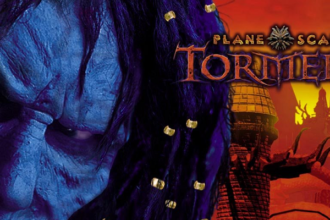The Assassin Class, Redux

In the Rogue Class, Part Five, I discussed the Assassin in broad terms, but didn’t have enough reference text to write about it in detail. I have since corrected this fault, with a copy of Dragon Magazine #379, with the original 4e Assassin, and Heroes of Shadow, with the Essentials version. The two are nearly unrelated in their mechanical conception of the class. That’s not uncommon in the Essentials reworks, but it’s quite pronounced here.
(Rogue Part One, Part Two, Part Three, Part Four, Part Five, Part Six; Avenger; Assassin)
Dragon Magazine #379
This assassin, which we might as well call “classic” or “original” so we can call the Essentials version “extra crispy” (calling it “New Coke” is mighty uncharitable), is 100% about using shadow magic to kill people. It’s how things are in non-Essentials 4e: if a class uses magic, it uses magic for all of its attacks and utility effects, excepting multiclass powers purchased with feats. I guess my point here is that it definitely doesn’t fit all settings for every assassin to have “cede[d] a portion of yourself to the Shadowfell, replacing a fundamental part of your being with a dark reflection of your true self.” I mean, that’s pretty metal, but it’s a stretch to imagine that as a character’s initial Call to Adventure. It’s less about killing people for money, and more about being an avatar of Death.
I totally want this core concept to show back up in 5e as a rogue or warlock subclass, though. It’s a great concept for a character, but not for every character of that class.
Some of the class breakdown I mentioned before, but I’ll repeat it all here. Assassins get:
- Cloth and leather armor proficiencies, and light shield proficiency.
- A solid range of one-handed weapons, simple and military alike, and simple ranged weapons.
- The sword-and-light-shield assassin is still weird to me, but it points back to 1e’s broad options pretty clearly (in which assassins use shields and any weapon they like).
- Also ki foci, because you can do a lot as an assassin without so much as hefting a weapon. It lets you play a creepy, murderous, close-range shadow mage, and that’s pretty hot too.
- Very few hit points. One of the builds is a patch on this fragility.
- Five trained skills, one of which is Stealth.
- Assassin’s Shroud, which is your damage kicker. You use this effect once per round on your target to build up to a devastating blow.
- This has a hard time keeping up with the “damage now and damage later” functionality of the rogue’s Sneak Attack, but if you’re scouting ahead and can get within 50 feet of your target, you might manage to start with four shrouds (the maximum) on your first target. Maybe.
- In the fiction, you’re painting the target with “invisible shrouds that reveal its weakest points.” It’s sort of a mystical targeting reticule? Kind of weird, but I can see it as Death (well, the Raven Queen) showing you exactly where to hit them to send them to Death’s realm.
- Guild Training, which is your build specialization.
- Bleak Disciples gain temporary hit points when they hit unbloodied targets. This emphasizes going a little slower through the first half of an enemy’s hit points as you build up shrouds, and getting through the second half (where you’re more vulnerable) very quickly indeed, as you cash in shrouds. Also it pays you for murdering minions.
- Night Stalkers add their Charisma bonus to damage against isolated targets. It’s a similar image to the Avenger’s Censure of Pursuit, but with a very different mechanical function. The Night Stalker wants to make you run off by yourself; the Pursuit avenger doesn’t care if you run right into a pack of your buddies, as long as you’re fleeing them.
- Shade Form, which is a setup move for positioning, hiding, or fleeing at top speed (because becoming insubstantial reduces incoming damage). If you’ve scouted ahead of the party to start laying down shrouds, but you get spotted and you’re in danger of getting aced, Shade Form might keep you alive long enough for your party to save you.
- Shadow Step is an at-will, short-range teleport, from one creature’s shadow to another creature’s shadow. The range scales up by tier, but remains quite short.
- Teleportation is the most advantageous form of movement in the game, and any kind of at-will teleport is a huge deal.
- Their four at-will options also say a lot about the playstyle: a short-range pull-and-snare, a power to turn your weapon into shadow (giving it immense reach and ignoring cover and superior cover, though still stopped by armor), a power that gets a slight damage boost from un-invoked shrouds on the target, and one that turns the shadows of creatures near the target into a damage bonus – that is, punishing your enemy for not isolating itself the way the Night Stalker needs.
- I mentioned the implement-only “assassin mage” idea above. The only serious problem with this build is that you only have one at-will option (executioner’s noose), and it’s a pull that you don’t actually want if you’re intending to stay at range. (You should use inescapable blade, and accept that your assassin mage has a bladed weapon as a prop for this one effect.) Other than that, you have at least one and often two options for every power choice point… except for paragon paths. You’re completely screwed on paragon paths.
The mechanics of the assassin’s encounter, daily, and utility powers are pretty slick and creepy, and they definitely give the opposition a rough time, fulfilling the assassin’s role of a striker that dabbles in controller. It’s a perfectly good class, but maybe one of the harder ones to tell stories about, unless shadow magic and the Shadowfell are central elements of your campaign.
Notably, the ideal race/class pairing here is on-message like whoa: the revenant is the perfect Chardonnay to go with your assassin brie. (I’m not saying it’s cheesy. Well, maybe I am, but it’s also effin’ classy.) The revenant – the race that is also all about the Shadowfell and serving the Raven Queen.
Heroes of Shadow
Where the “classic” assassin is a shadow wielder through and through, the Executioner assassin is a weapon-wielder who will “even mix in some shadow magic when appropriate.” This is still 4e in its dark, brooding 90’s-era-comics phase. One of the two assassins’ guilds described here is a lift of DC’s League of Shadows, especially as Christopher Nolan presented it. The other is all about having secretive trade conventions, like the Cereal Convention in Sandman.
The Executioner Assassin gets:
- Slightly more hit points than the classic. Still fairly fragile, but now on par with the rogue, and ahead by one in healing surges per day.
- The same armor proficiencies; no shields (well, sort of – I’ll come back to this).
- The same variety of weapons and ki foci, plus garrotes (a new weapon), blowguns, bolas, and shortbows.
- Garrotes, blowguns, and bolas each have unique moves describing their use. They’re not exactly intended for use outside the context of those attack powers.
- The same skill options.
- Versatile Defense, granting them either light shield proficiency or two-weapon defense.
- I like that there are options here, though since it would never to possible to use them simultaneously… why not grant both and call it a day?
- Attack Finesse, which flips your melee basic attacks to Dex instead of Strength. Good choice here, though overall I wish that 4e had decided from the outset that melee basic attacks could use Dex if you wanted. It would have saved them some awkwardness. Anyway.
- This feature also gives you a once-per-turn damage kicker with the class’s weapon list.
- Guild Attacks – a choice of one list of three at-will attacks, or the other list of three at-will attacks. (That is, they’re bundled, not a la carte.)
- The Red Scales guild offers melee at-will attacks: garrote strangle, poisoned dagger, and quick lunge. Garrote strangle is particularly interesting, as it models something that is hard to do well in games. The strangle requires a bit of work to set up, and puts you in a bad situation against anyone other than your target, but on a hit your target is about to have a real bad day.
- The League of Whispers has three different ranged at-will attacks: bola takedown, precision dart, and quick shot. Even though they have these at-will attacks, the game clearly expects assassins of both guilds to make robust use of their melee and ranged basic attacks as well.
- Assassin’s Strike, paralleling the Rogue’s Backstab power, a once-per-encounter burst of damage declared after a hit. It starts at 1d10 and scales to 7d10 at 27th
- Quick Swap, letting the assassin flip back and forth between melee and ranged combat, or between different weapons of a given style.
- I like this more than its simplicity seems to merit, because it makes me think of Vlad Taltos and his fast-access hardware routines.
- Poison Use, which in a weird way is Vancian poison casting. You get a limited number of recipes and choose one per extended rest to brew in an unstable form. As you advance, you get more recipes known and more poisons per rest – you know, daily powers. Their throughput doesn’t feel like a wizard’s spells, though. Poisons instead are a damage boost and effect on your next attack with a weapon, or (depending on the poison) every attack with that weapon for the rest of the encounter. Each poison also has an ingested, inhaled, or contact version, which is a nice touch. Anyway, I love the idea of an alchemist assassin who plays almost like a wizard.
- This brings us to the end of first level. Executioner assassins have a lot on the ball.
- Utility powers chosen from a list at 2nd, 6th, and 10th These are all in basically the same themes, mixing martial and shadow effects.
- Death Attack, which reduces a target to 0 hit points if you’ve just made an attack that reduced it to 10 hit points or fewer.
- As a reminder, normal 3rd-level opponents have hit point totals in the high 30s or 40s, so you might be “skipping” as much as a quarter of the fight. Naturally, this percentage tails off as you advance, but this feature improves its kill threshold by 10 points at 13th level, and again at 23rd.
- Nimble Drop, which reduces falling damage.
- Hidden Stab, an at-will stab-and-grab attack that more or less puts your blade to the target’s throat, in a traditional hostage move. It’s nasty, though like the Guild-specific at-wills, it’s pretty situational.
- Flawless Disguise, which does basically what it says on the tin as part of a short rest.
- This is the last feature within the first ten levels. This being Essentials, the paragon and epic tiers are labeled as if they are separate classes, but that’s mostly because a thirty-level chart of features would be overwhelming. Heroes of Shadow only presents one paragon path and epic destiny for Executioner assassins, but I think it’s expected that you could take any other paragon path or epic destiny that you qualified to enter.
- Blindside (Guild Executioner), a hefty +4 bonus to your first attack in an encounter if you started the encounter hidden.
- Devastating Assassination (Guild Executioner), a further boost to Assassin’s Strike.
- Presumably this is as opposed to tepid, forgettable assassinations.
- Executioner’s Action (Guild Executioner), which sets a floor of damage per die on your action-point attacks. Considering how many assassin weapons use d4s, a floor of 4 damage per die is eye-opening.
- Daring Escape (Guild Executioner), a getaway after a kill as clean as anything Michael Corleone ever did.
- Vital Strike (Guild Executioner), which makes at-will attacks deal half damage on a miss. Sure, whatevah, why not.
- Untraceable Step, which turns you invisible and lets you move. Another nice getaway power.
- Shadow Coffin, which is super weird: it captures the body of someone you kill in an extradimensional space. Good luck with that resurrection, or even gathering that evidence.
- Poisoner’s Secrets (Guild Executioner), giving you access to wyvern venom. For whatever reason, this is unique to the guild you work for. To be fair, wyvern venom is a very effective murder weapon.
- Ignore Barriers, which gives you phasing as a daily utiliy.
I’ve skipped over a lot of poisons and opportunities to manufacture more poisons in a day, because this is already more blow-by-blow detail than I usually give classes. The point is that the class starts out using shadow magic sparingly, gradually becoming more and more reliant on its use. This fits the mechanics to the fiction that I expect to see from a D&D character’s arc.
Gameplay is a cycle of approach, devastating strikes, and getaway, with much less tactical reliance on controlling enemy or ally behavior than the classic assassin. It’s much closer to the D&D of editions not numbered 4, but I love the tactical ballet of 4e combat. I can be happy with the parts that were preserved in the Executioner assassin, though. It’s more complex and cunning than many Essentials classes.
Conclusion
The two 4e assassins are very different in their themes and concepts. The implied story of the Executioner assassin appeals to me a lot more, while they both look like compelling gameplay and the original 4e assassin has style and creepy factor to spare. The 1e and 2e assassins have no magic at all, 3.x is a dabbler at most, and the 5e assassin returns to strictly non-magical killing (though if you wanted to treat Impostor as Faceless Man magic, I wouldn’t blame you). You probably cobble together a 3.x or Executioner assassin with multiclassing and feats in 5e, but the most practical way to re-tell this story is a hack of the Arcane Trickster that replaces enchantment with necromancy, and Mage Hand Legerdemain and Spell Thief with murder-oriented features. Hmm…
Special Thanks go to skwyd42, for indispensable assistance in putting a shine on this article.



